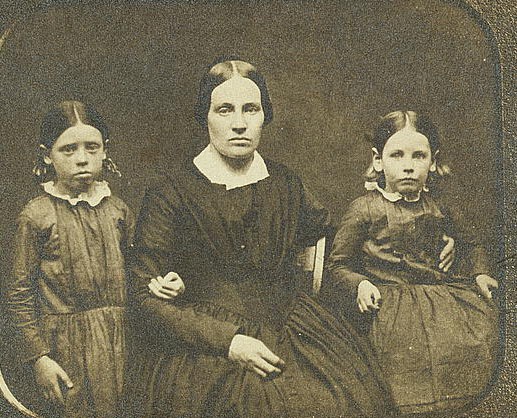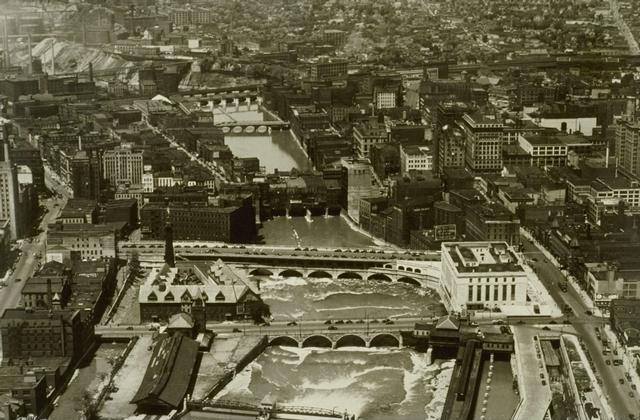|
The Immortal Ten
The Immortal Ten were a group of militant abolitionists and Free-Staters in the Kansas Territory who, on July 23, 1859, freed Dr. John Doy from a Missouri jail, where he was being held for allegedly abducting slaves. Doy and his 19-year-old son Charles were fellow abolitionists who had been arrested by pro-slavery Missouri bounty hunters while trying to deliver slaves to freedom in the Nebraska Territory via the Underground Railroad. While his son was acquitted of the charges and released, John was sentenced to prison. The ten men who took it upon themselves to rescue Doy were led by Major James B. Abbott and included Doy's son Charles, George R. Hay, Silas Soule, Capt. John E. Stewart, S.J. Willis, Thomas Simmons, Joseph Gardner, Jacob Senix, and Captain Joshua A. Pike. The episode occurred during a period of violent interstate ideological conflict preceding the American Civil War known as "Bleeding Kansas". Capture of John and Charles Doy On January 25, 1859, the Doys were pas ... [...More Info...] [...Related Items...] OR: [Wikipedia] [Google] [Baidu] |
John Doy And Rescue Party
John is a common English name and surname: * John (given name) * John (surname) John may also refer to: New Testament Works * Gospel of John, a title often shortened to John * First Epistle of John, often shortened to 1 John * Second Epistle of John, often shortened to 2 John * Third Epistle of John, often shortened to 3 John People * John the Baptist (died ), regarded as a prophet and the forerunner of Jesus Christ * John the Apostle (died ), one of the twelve apostles of Jesus Christ * John the Evangelist, assigned author of the Fourth Gospel, once identified with the Apostle * John of Patmos, also known as John the Divine or John the Revelator, the author of the Book of Revelation, once identified with the Apostle * John the Presbyter, a figure either identified with or distinguished from the Apostle, the Evangelist and John of Patmos Other people with the given name Religious figures * John, father of Andrew the Apostle and Saint Peter * Pope John (disambigu ... [...More Info...] [...Related Items...] OR: [Wikipedia] [Google] [Baidu] |
Lawrence, Kansas
Lawrence is a city in and the county seat of Douglas County, Kansas, United States, and the sixth-largest city in the state. It is in the northeastern sector of the state, astride Interstate 70 in Kansas, Interstate 70, between the Kansas River, Kansas and Wakarusa River, Wakarusa Rivers. As of the 2020 United States census, 2020 census, the population of the city was 94,934. The city is a college town with a significant student population, because it is home to both the University of Kansas (KU) and Haskell Indian Nations University (HINU). Lawrence was founded by the New England Emigrant Aid Company (NEEAC) and was named for Amos A. Lawrence, an abolitionist from Massachusetts, who offered financial aid and support for the settlement. Lawrence was central to the Bleeding Kansas period (1854–1861), and the site of the Wakarusa War (1855) and the Sacking of Lawrence (1856). During the American Civil War it was also the site of the Lawrence massacre (1863). Lawrence began as ... [...More Info...] [...Related Items...] OR: [Wikipedia] [Google] [Baidu] |
Union (American Civil War)
The Union was the central government of the United States during the American Civil War. Its civilian and military forces resisted the Confederate State of America, Confederacy's attempt to Secession in the United States, secede following the 1860 United States presidential election, election of Abraham Lincoln as president of the United States. Presidency of Abraham Lincoln, Lincoln's administration asserted the permanency of the federal government of the United States, federal government and the continuity of the Constitution of the United States, United States Constitution. Nineteenth-century Americans commonly used the term Union to mean either the federal government of the United States or the unity of the states within the Federalism in the United States, federal constitutional framework. The Union can also refer to the people or territory of the states that remained loyal to the national government during the war. The loyal states are also known as the North, although fou ... [...More Info...] [...Related Items...] OR: [Wikipedia] [Google] [Baidu] |
Walt Whitman
Walter Whitman Jr. (; May 31, 1819 – March 26, 1892) was an American poet, essayist, and journalist; he also wrote two novels. He is considered one of the most influential poets in American literature and world literature. Whitman incorporated both transcendentalism and literary realism, realism in his writings and is often called the father of free verse. His work was controversial in his time, particularly his 1855 poetry collection ''Leaves of Grass'', which was described by some as obscene for its overt sensuality. Whitman was born in Huntington, New York, Huntington on Long Island and lived in Brooklyn as a child and through much of his career. At age 11, he left formal schooling to go to work. He worked as a journalist, a teacher, and a government clerk. Whitman's major poetry collection, ''Leaves of Grass'', first published in 1855, was financed with his own money and became well known. The work was an attempt to reach out to the common person with an American epi ... [...More Info...] [...Related Items...] OR: [Wikipedia] [Google] [Baidu] |
John Brown (abolitionist)
John Brown (May 9, 1800 – December 2, 1859) was an American abolitionist in the decades preceding the Civil War. First reaching national prominence in the 1850s for his radical abolitionism and fighting in Bleeding Kansas, Brown was captured, tried, and executed by the Commonwealth of Virginia for a raid and incitement of a slave rebellion at Harpers Ferry, Virginia, in 1859. An evangelical Christian of strong religious convictions, Brown was profoundly influenced by the Puritan faith of his upbringing. He believed that he was "an instrument of God", raised to strike the "death blow" to slavery in the United States, a "sacred obligation". Brown was the leading exponent of violence in the American abolitionist movement, believing it was necessary to end slavery after decades of peaceful efforts had failed. Brown said that in working to free the enslaved, he was following Christian ethics, including the Golden Rule, Reprinted in '' The Liberator'', October 28, 1859 and th ... [...More Info...] [...Related Items...] OR: [Wikipedia] [Google] [Baidu] |
Horse Theft
Horse theft is the crime of stealing horses. A person engaged in stealing horses is known as a horse thief. Historically, punishments were often severe for horse theft, with several cultures pronouncing the sentence of death upon actual or presumed thieves. Several societies were formed in the United States to prevent horse theft and apprehend horse thieves. However, horse theft continues to occur throughout the world as horses are stolen for their horse meat, meat, for ransom, or in disputes between their owners and other persons. Before the invention of the Car, automobile, horses were considered essential as there were few ways to call for help and travel long-distance. Horse theft today is comparable to Motor vehicle theft, automobile theft, a crime punishable by felony jail time. History Europe Horse theft was a well-known crime in Medieval Europe, medieval and Early modern Europe, early modern times and was severely prosecuted in many areas. While many crimes were puni ... [...More Info...] [...Related Items...] OR: [Wikipedia] [Google] [Baidu] |
Rochester, New York
Rochester is a city in and the county seat, seat of government of Monroe County, New York, United States. It is the List of municipalities in New York, fourth-most populous city and 10th most-populated municipality in New York, with a population of 211,328 at the 2020 United States census, 2020 census. The city forms the core of the larger Rochester metropolitan area, New York, Rochester metropolitan area in Western New York, with a population of just over 1 million residents. Throughout its history, Rochester has acquired several nicknames based on local industries; it has been known as "History of Rochester, New York#Rochesterville and The Flour City, the Flour City" and "History of Rochester, New York#The Flower City, the Flower City" for its dual role in flour production and floriculture, and as the "World's Image Center" for its association with film, optics, and photography. The city was one of the United States' first boomtowns, initially due to the fertile Genesee River ... [...More Info...] [...Related Items...] OR: [Wikipedia] [Google] [Baidu] |
Ambrotype
The ambrotype, also known as a collodion positive in the UK, is a positive photograph on glass made by a variant of the wet plate collodion process. As a cheaper alternative to the French daguerreotype, ambrotypes came to replace them. Like a print on paper, it is viewed by reflected light. Like the daguerreotype or the prints produced by a Polaroid camera, each is a unique original that could only be duplicated by using a camera to copy it. The ambrotype was introduced in the 1850s. During the 1860s it was superseded by the tintype, a similar photograph on thin black-lacquered iron, hard to distinguish from an ambrotype if under glass. The term ''ambrotype'' comes from ''ambrotos'', "immortal", and ''typos'', "impression". Process One side of a clean glass plate was coated with a thin layer of iodized collodion, then dipped in a silver nitrate solution. The plate was exposed in the camera while still wet. Exposure times varied from five to sixty seconds or more d ... [...More Info...] [...Related Items...] OR: [Wikipedia] [Google] [Baidu] |
Abolitionist John Doy
Abolitionism, or the abolitionist movement, is the political movement to end slavery and liberate enslaved individuals around the world. The first country to fully outlaw slavery was France in 1315, but it was later used in its colonies. The first country to abolish and punish slavery for indigenous people was Spain with the New Laws in 1542. Under the actions of Toyotomi Hideyoshi, chattel slavery has been abolished across Japan since 1590, though other forms of forced labour were used during World War II. The first and only country to self-liberate from slavery was a former French colony, Haiti, as a result of the Revolution of 1791–1804. The British abolitionist movement began in the late 18th century, and the 1772 Somersett case established that slavery did not exist in English law. In 1807, the slave trade was made illegal throughout the British Empire, though existing slaves in British colonies were not liberated until the Slavery Abolition Act 1833. In the United ... [...More Info...] [...Related Items...] OR: [Wikipedia] [Google] [Baidu] |





